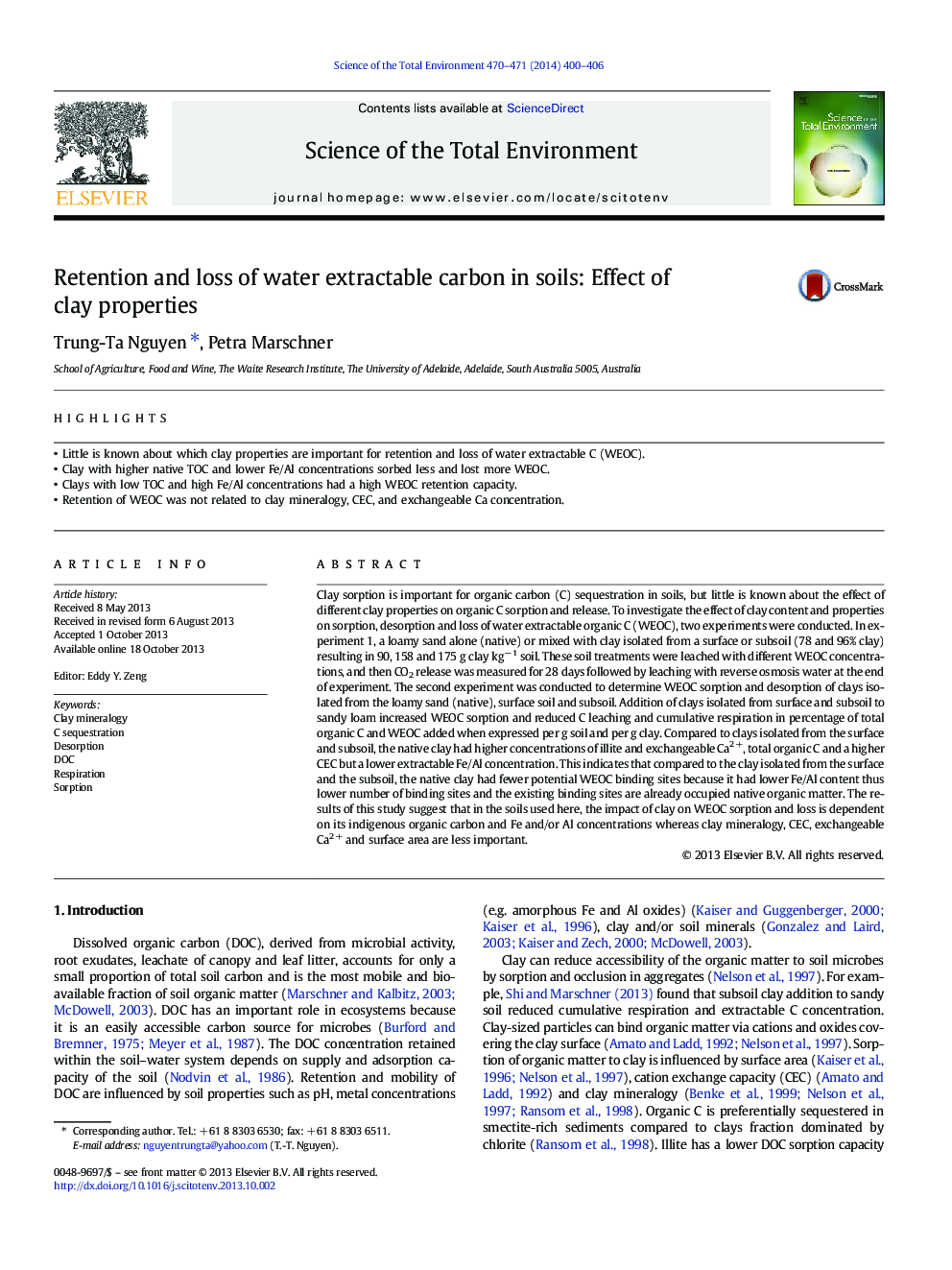| Article ID | Journal | Published Year | Pages | File Type |
|---|---|---|---|---|
| 6331386 | Science of The Total Environment | 2014 | 7 Pages |
Abstract
Clay sorption is important for organic carbon (C) sequestration in soils, but little is known about the effect of different clay properties on organic C sorption and release. To investigate the effect of clay content and properties on sorption, desorption and loss of water extractable organic C (WEOC), two experiments were conducted. In experiment 1, a loamy sand alone (native) or mixed with clay isolated from a surface or subsoil (78 and 96% clay) resulting in 90, 158 and 175 g clay kgâ 1 soil. These soil treatments were leached with different WEOC concentrations, and then CO2 release was measured for 28 days followed by leaching with reverse osmosis water at the end of experiment. The second experiment was conducted to determine WEOC sorption and desorption of clays isolated from the loamy sand (native), surface soil and subsoil. Addition of clays isolated from surface and subsoil to sandy loam increased WEOC sorption and reduced C leaching and cumulative respiration in percentage of total organic C and WEOC added when expressed per g soil and per g clay. Compared to clays isolated from the surface and subsoil, the native clay had higher concentrations of illite and exchangeable Ca2 +, total organic C and a higher CEC but a lower extractable Fe/Al concentration. This indicates that compared to the clay isolated from the surface and the subsoil, the native clay had fewer potential WEOC binding sites because it had lower Fe/Al content thus lower number of binding sites and the existing binding sites are already occupied native organic matter. The results of this study suggest that in the soils used here, the impact of clay on WEOC sorption and loss is dependent on its indigenous organic carbon and Fe and/or Al concentrations whereas clay mineralogy, CEC, exchangeable Ca2 + and surface area are less important.
Related Topics
Life Sciences
Environmental Science
Environmental Chemistry
Authors
Trung-Ta Nguyen, Petra Marschner,
